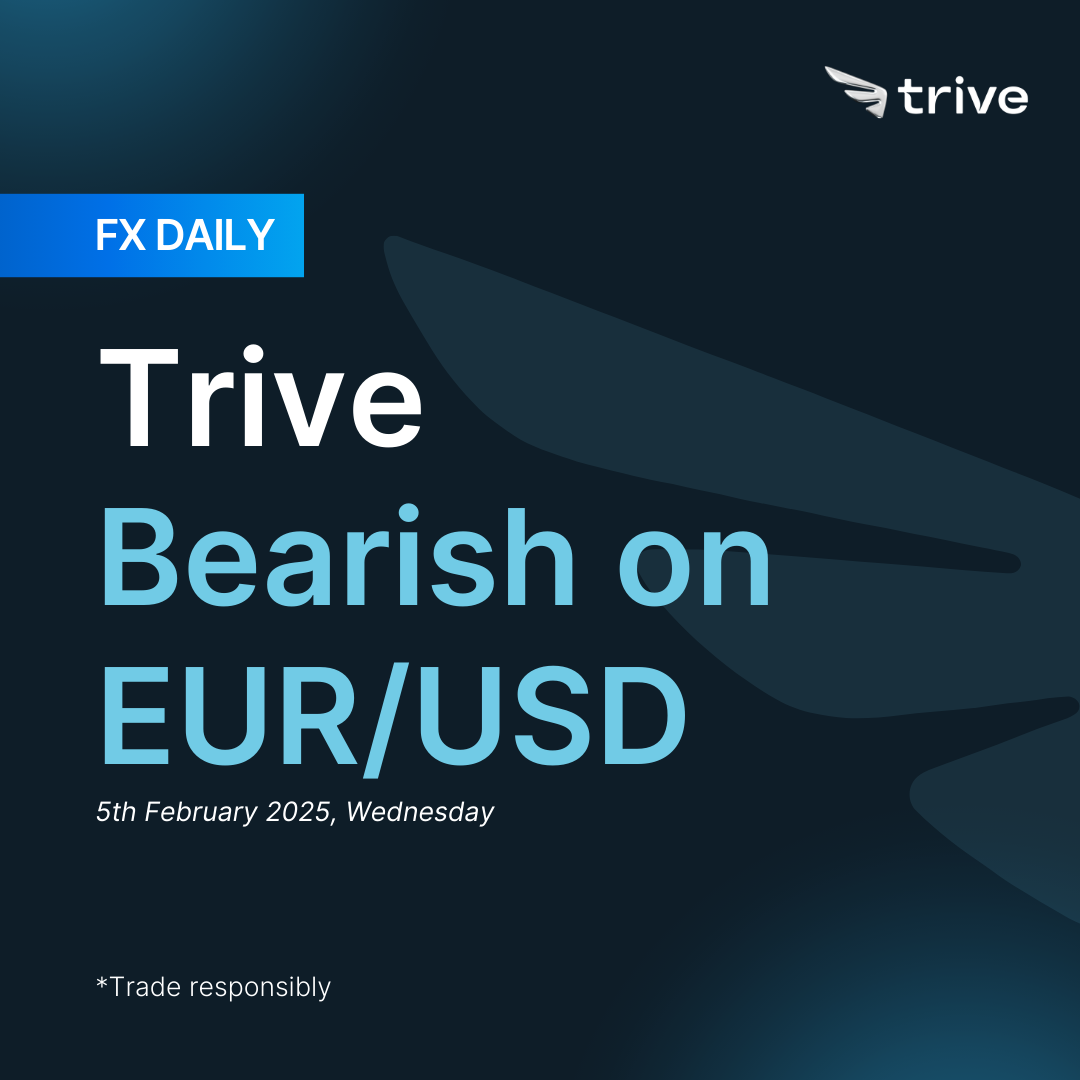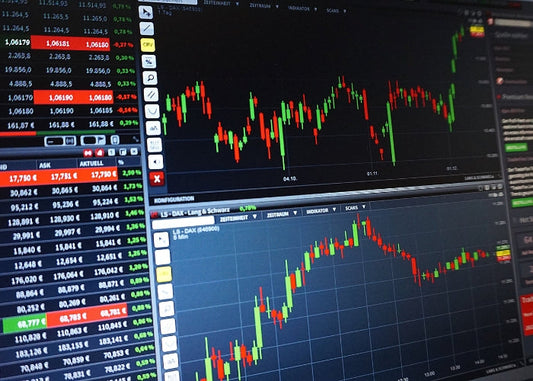FX Daily: Trive Bearish on EUR/USD

Although near-term tariff risks have somewhat eased, they remain a concern, particularly for the EU. As a reminder, Trump is still considering a 10% tariff on the EU, with trade being the primary issue—unlike Canada and Mexico, where border security played a key role in negotiations.
EUR: Different Story
The euro remains under bearish pressure, primarily driven by weak economic growth and ongoing disinflation. However, trade tariffs—rather than ECB policy or domestic macroeconomic conditions—are the key factors influencing the euro’s trajectory. As expected, the ECB cut rates by 25bps to 2.75%, maintaining its data-dependent, meeting-by-meeting approach. Despite easing measures, monetary policy remains restrictive given the eurozone’s sluggish economy. While structural challenges cannot be addressed solely through monetary policy, political instability will likely keep the ECB engaged in providing economic support. The central bank appears committed to further rate cuts as long as inflation pressures continue to subside. ING views the January meeting as neutral but maintains that the ECB’s path toward neutral rates remains unchanged.
Lagarde’s comments reinforced this outlook, stating that the ECB’s macro assessment remains largely consistent with December’s projections. The central bank expects a gradual demand recovery despite persistent economic weakness. However, exports—one of the key growth drivers—face risks from potential US trade tariffs. On inflation, the ECB projects the headline rate to remain around current levels before stabilizing at 2% later this year. Lagarde dismissed discussions on pausing rate cuts as “premature,” reinforcing the ECB’s dovish stance. Market pricing currently reflects a 92% probability of another 25bps cut in March, which would bring the deposit rate to 2.50%.
Additionally, the latest German inflation data further supports the case for continued rate cuts. January’s headline inflation fell to 2.3% y/y from 2.6%, with core inflation declining to 2.9% from 3.3%. Looking ahead, next week’s key events include the preliminary HICP inflation release for January and speeches by ECB officials. Political uncertainty in Paris, as well as polling data ahead of Germany’s general elections, may also draw market attention. However, the most critical focus remains on the ECB’s forthcoming assessment of the neutral rate, set to be published in a staff report this week. If the eurozone avoids a deeper stagflationary scenario, the ECB is likely to continue easing toward neutral territory—or potentially below—should growth remain weak.
On the geopolitical front, trade risks continue to weigh heavily on EUR/USD. While President Trump has yet to finalize a tariff timeline for the EU, he has confirmed his intention to impose tariffs but did not specify when. If US tariffs are implemented, EUR/USD could face significant downside pressure, particularly if broader trade tensions escalate. Given the euro’s vulnerability to trade developments, the currency pair is expected to remain more influenced by tariff-driven USD strength than by ECB policy decisions or domestic macro story.
USD: Tariffs Man
The baseline outlook for the USD remains bullish, primarily driven by trade policy developments under President Trump rather than the Federal Reserve’s stance. While the Fed kept rates unchanged at 4.25-4.50% in its January meeting, Powell’s comments and the statement carried a neutral-to-slightly-hawkish tone, reinforcing that monetary policy remains restrictive yet well-calibrated. Notably, the labor market was recharacterized as “solid,” and references to inflation progress were adjusted to highlight that inflation remains somewhat elevated. However, Powell emphasized the Fed’s independence and the uncertainty surrounding the new administration’s policies. He reiterated that there is no urgency to adjust the current policy stance, suggesting rates will likely remain on hold through the first half of the year despite some speculation about a potential March cut.
Additionally, the release of December’s PCE inflation data— the Fed’s preferred measure—indicates that inflation remains on track toward 2%. The core PCE deflator rose 0.2% month-over-month and 2.8% year-over-year, in line with expectations. Encouragingly, at three decimal places, the monthly increase stood at 0.159%, below the 0.17% average required over 12 months to achieve 2% annually. However, with significant uncertainty surrounding regulatory, tariff, fiscal, and immigration policies, the Fed is unlikely to take any chances, keeping monetary policy unchanged until at least June—further supporting the USD.
The primary catalyst for USD strength, however, is Trump’s renewed tariff threats. He confirmed plans to impose 25% tariffs on imports from Mexico and Canada, along with a 10% tariff on Chinese goods, effective February 1, citing trade imbalances and fentanyl concerns. While the market remains somewhat skeptical about full execution, past episodes suggest that Trump’s aggressive trade rhetoric can escalate quickly. If the tariffs are implemented, the currencies of targeted countries will face significant downside risks, while a failure to follow through could lead to broad USD weakness. Additionally, the risk of retaliation from Canada and Mexico could disrupt global trade flows, reinforcing USD’s appeal as a safe-haven asset.
Looking ahead, markets will focus on this week’s January Non-Farm Payrolls (NFP) and ISM data while closely monitoring any further tariff-related headlines from Trump. FX investors will scrutinize incoming US economic data and Fed commentary for clues about future policy moves while also factoring in Trump’s policies. However, with USD already overbought, further gains would likely require either stronger-than-expected economic data or a more hawkish stance from Trump. Overall, while the US economy remains resilient and the Fed continues to diverge from G10 central banks, which are leaning toward rate cuts, trade policy—specifically the "Tariffs Trade"—is expected to remain the primary driver of USD strength in the near term.
Current market context
EUR/USD continues to rebound, approaching the 1.04 level, supported by relief that Trump successfully reached a deal with Canada and Mexico. However, the EU remains vulnerable, with reports from The Telegraph suggesting that Trump is considering imposing a 10% tariff on the EU. ING highlights that this could pose a more persistent challenge for the EU compared to Canada and Mexico, as their disputes were primarily addressed through border security measures—something not applicable to the EU. Instead, the US-EU tensions are centered purely on trade, making a resolution more difficult.
Meanwhile, the anticipated call between President Trump and China’s President Xi did not take place, with no clear explanation for the delay. The expectation is that it will be rescheduled. If the call occurs and results in a negative outcome, renewed risk aversion could weigh on EUR/USD again.
Going forward, the key risk to this outlook is a further recovery in risk sentiment, particularly if positive news emerges from a US-China call. However, in the near term, trade tensions with the EU remain a major concern, as the motivations behind tariffs on the EU differ from those on Canada and Mexico.

Disclaimer
This material is provided for informational purposes only and does not constitute financial, investment, or other advice. The opinions expressed in this material are those of the author and do not necessarily reflect the views of Trive International. No opinion contained in this material constitutes a recommendation by Trive International or its author regarding any particular investment, transaction, or investment strategy. This material should not be relied upon in making any investment decision.
The information provided does not consider the individual investment objectives, financial situation, or needs of any specific investor. Investors should seek independent financial advice tailored to their individual circumstances before making any investment decisions. Trive International shall not be liable for any loss, damage, or injury arising directly or indirectly from the use of this information or from any action or decision taken as a result of using this material.
Trive International may or may not have a financial interest in the companies or securities mentioned. The value of investments may fluctuate, and investors may not get back the amount they originally invested. Past performance is not indicative of future results.
For more information about Trive International, please visit http://trive.com/int
Additional Information
Investing involves risk, including the potential loss of principal. Diversification and asset allocation strategies do not ensure a profit or guarantee against loss. The content in this material is subject to change without notice and may become outdated or inaccurate over time. Trive International does not undertake any obligation to update the information in this material.
By accessing this material, you acknowledge and agree to the terms of this disclaimer. If you do not agree with these terms, please refrain from using this information.
暂无评论
主页
特里夫
TriveHub





0条评论